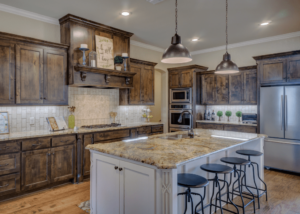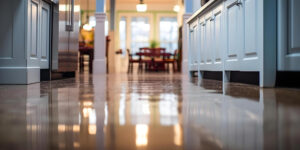
How to Find best fashion designer in 2025
How to Find Best Fashion Designer in 2025: Your Ultimate Guide
The world of fashion design is very vast, with creators ranging from high-end couturiers to up-and-coming freelancers. Choosing the right designer for your project—whether it’s a wedding dress, a capsule wardrobe, or a bold runway piece—requires careful planning and research. This article provides a step-by-step roadmap to finding a fashion designer who can turn your ideas into reality, complete with real-life examples and tips to make the process smooth and enjoyable.
1. Clarify Your Style and Project Goals
The first step in finding the best fashion designer is understanding exactly what you want. Are you looking for a one-off piece for a special event, or do you need a cohesive collection for a brand launch? Defining your goals will help you target designers who specialize in your desired style and scope.
-
Key Considerations:
-
What occasion is the clothing for (e.g., wedding, gala, everyday wear)?
-
What aesthetic do you prefer (e.g., classic, edgy, romantic)?
-
What’s your timeline and budget?
-
Are there specific fabrics or ethical practices you prioritize?
-
For example, when Emily, a New York-based marketing executive, needed a professional yet stylish wardrobe for client meetings, she pinpointed her preference for sleek, modern designs with sustainable fabrics. This clarity helped her focus on designers who specialized in eco-conscious workwear.
Actionable Tip: Write down your project details, including style preferences, budget (e.g., $500–$5,000), and timeline (e.g., 2–6 months). Use apps like Canva to create a digital inspiration board with colors, textures, and silhouettes you love.
2. Explore Online and Local Resources
With your vision in hand, start searching for designers who match your criteria. Both online platforms and local networks offer rich opportunities to discover talent.
-
Online Platforms: Instagram, Pinterest, and Etsy are great for finding independent designers. Search hashtags like #CustomFashion or #BespokeDesigner to uncover hidden gems. Websites like ASOS Marketplace or Not Just a Label also showcase emerging talent.
-
Local Searches: Use Google Maps or Yelp to find designers in your area. For instance, searching “bespoke fashion designer in Miami” can reveal local ateliers or boutiques.
-
Networking: Attend fashion events, trunk shows, or art fairs to meet designers in person and see their work firsthand.
Real-Life Example: When Alex, a Los Angeles actor, needed a standout outfit for a film premiere, he used Instagram to find a designer whose vibrant, theatrical designs caught his eye. A quick DM led to a consultation, and the result was a custom jacket that stole the show.
Actionable Tip: Create a spreadsheet to track designers’ names, websites, and specialties. Follow their social media to get a sense of their current work and client interactions.
3. Review Portfolios and Past Work
A designer’s portfolio is a window into their skill and style. Spend time reviewing their previous projects to ensure they align with your vision.
-
Look for Consistency: Does the designer consistently deliver high-quality work across their portfolio?
-
Check for Relevance: If you need a bridal gown, ensure they’ve created wedding dresses before. If it’s streetwear, look for urban or casual designs.
-
Evaluate Craftsmanship: Zoom in on photos to check for precise stitching, clean lines, and thoughtful details.
For instance, when Sophie, a London-based influencer, wanted a bold red-carpet dress, she chose a designer whose portfolio featured dramatic, well-crafted gowns. The designer’s attention to detail in beading and fit gave Sophie confidence in her choice.
Actionable Tip: Request a portfolio PDF or links to recent work. If possible, ask to see physical samples or arrange a video call to discuss specific pieces.
4. Verify Experience and Expertise
Experience matters when choosing a designer. While new designers can offer fresh perspectives, seasoned professionals often bring reliability and technical skill.
-
Specialization: Look for designers with expertise in your project type. A bridal designer may not excel at menswear, and vice versa.
-
Client Feedback: Check reviews on Google, Yelp, or social media for insights into their professionalism and reliability.
Real-Life Example: When Raj, a Chicago entrepreneur, needed a custom kurta for a cultural event, he chose a designer with extensive experience in South Asian fashion. The designer’s knowledge of traditional embroidery techniques ensured an authentic, high-quality piece.
Actionable Tip: Ask designers how many similar projects they’ve completed and request references or testimonials from past clients.
Click Here to read about best furniture designs.
5. Set a Realistic Budget and Timeline
Custom fashion can range from affordable to extravagant, so be clear about your budget from the start. Discuss all costs, including materials, labor, and fittings, to avoid surprises.
-
Budget Breakdown: A custom dress might cost $1,000–$10,000, depending on complexity and materials. Clarify what’s included in the price.
-
Timeline: Custom work often takes 1–6 months, so confirm the designer’s availability.
For example, when Mia, a San Francisco bride, hired a designer for her wedding dress, she set a $2,500 budget and a four-month timeline. The designer suggested cost-effective fabrics to meet her budget without compromising quality.
Actionable Tip: Request a written quote and timeline, and ensure both are documented in a contract.
6. Prioritize Communication and Chemistry
A successful collaboration hinges on good communication. During consultations, assess whether the designer listens to your ideas, offers suggestions, and communicates clearly.
-
Key Questions:
-
How often will they update you on progress?
-
Are they open to revisions?
-
Do they explain their process in a way that builds trust?
-
Real-Life Example: When Carlos, a dancer, needed a performance costume, he chose a designer who responded promptly and shared sketches throughout the process. Their open communication ensured the costume was both functional and visually striking.
Actionable Tip: Schedule a phone or video call to gauge the designer’s enthusiasm and responsiveness. Trust your instincts about their personality and professionalism.
7. Check for Ethical and Sustainable Practices
If sustainability or ethical production is important to you, prioritize designers who use eco-friendly materials or fair labor practices. Ask about their sourcing and manufacturing processes.
Actionable Tip: Look for designers certified by organizations like Fair Trade or those using organic cotton, recycled fabrics, or low-waste techniques.
8. Plan for Fittings and Final Adjustments
Custom designs often require multiple fittings to perfect the fit. Discuss whether fittings will be in-person or virtual and how alterations are handled.
Actionable Tip: Book fittings early, especially for time-sensitive projects, and clarify who covers alteration costs.
Conclusion
Finding the best fashion designer is about aligning their expertise with your vision, budget, and values. By defining your goals, researching thoroughly, and prioritizing communication, you’ll discover a designer who can create a piece that’s uniquely yours. Start by building an inspiration board, exploring online and local talent, and scheduling consultations. With these steps, you’re on your way to a stunning custom creation that reflects your style and personality.





